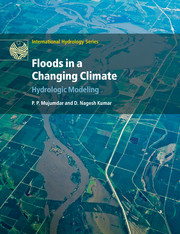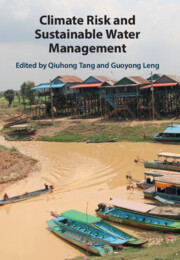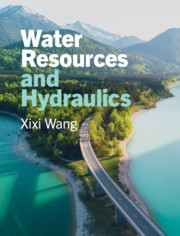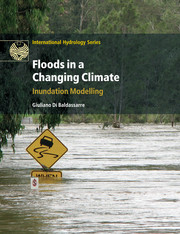Floods in a Changing Climate
Various modeling methodologies are available to aid planning and operational decision making: this book synthesises these, with an emphasis on methodologies applicable in data scarce regions, such as developing countries. Problems included in each chapter, and supported by links to available online data sets and modelling tools, engage the reader with practical applications of the models. Academic researchers in the fields of hydrology, climate change, and environmental science and hazards, and professionals and policy-makers working in hazard mitigation, remote sensing and hydrological engineering will find this an invaluable resource.
This volume is the second in a collection of four books on flood disaster management theory and practice within the context of anthropogenic climate change. The others are: Floods in a Changing Climate: Extreme Precipitation by Ramesh Teegavarapu, Floods in a Changing Climate: Inundation Modelling by Giuliano Di Baldassarre and Floods in a Changing Climate: Risk Management by Slodoban Simonović.
- Readily available models such as HEC-HMS, HEC-RAS and SWMM are demonstrated, providing insight into their practical application
- Includes the empirical models of Artificial Neural Networks (ANNs) and Fuzzy Inference Systems, enabling application to flow forecasting and flood routing
- Presents a variety of modeling tools including remote sensing, digital elevation modeling and GIS technologies, providing methodologies to assess climate change impacts on hydrology in general
Product details
March 2018Paperback
9781108447027
188 pages
273 × 215 × 12 mm
0.54kg
142 b/w illus. 28 colour illus. 50 tables 40 exercises
Available
Table of Contents
- Part I. Introduction:
- 1. Introduction
- Part II. Modeling for Climate Change Impact Assessment:
- 2. Hydrologic modeling for floods
- 3. Climate change impact assessment
- Part III. Remote Sensing, GIS and DEM for Modeling of Floods:
- 4. Remote sensing (RS) for hydrologic modeling
- 5. Geographic information system (GIS) for hydrologic modeling
- Part IV. Case Studies and Future Perspectives:
- 6. Case studies and future perspectives
- References
- Index.









